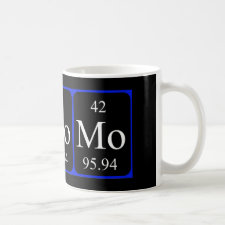
Authors: Xu JS, Shang M, Liu J, Chen X, Cao YH
Article Title: Simultaneous self-assembly of molecularly imprinted magnetic nanoparticles to construct a magnetically responsive photonic crystals sensor for bisphenol A.
Publication date: 2021
Journal: Sensors and Actuators B: Chemical
Volume: 338
Article Number: 129858.
DOI: 10.1016/j.snb.2021.129858
Alternative URL: https://www.sciencedirect.com/science/article/pii/S0925400521004275
Abstract: A colorimetric bisphenol A (BPA) sensor was prepared based on magnetically responsive photonic crystals using molecularly imprinted magnetic colloidal nanoparticles (MIMCNPs) as the blocking units. Both forming the magnetic nanoparticles and molecularly imprinting were simultaneously accomplished through self-assembly in miniemulsion system where oleic acid modified Fe3O4 (OA-Fe3O4) nanoparticles in organic solvent as the oil phase, BPA as the template and an amphiphilic nonionic copolymer P(St-co-VP) as the emulsifier. With the evaporation of the organic solvent, the submicro-level superparamagnetic NPs where OA-Fe3O4 nanocluster as the core and P(St-co-VP) as the shell were self-assembled, and imprinted sites were also fixed on the shell of the MIMCNPs without additional polymerization reactions. Under certain magnetic field, BPA molecularly imprinted magnetically responsive photonic crystals (BPA-MIMRPCs) were obtained relying on the balance between magnetic attraction and steric hindrance. As BPA concentration increased from 0.001 g/L to 0.400 g/L, the structural color of BPA-MIMRPCs sensor turned green to red, and the reflection wavelength shifted from 540 nm to 700 nm. The detection limit was estimated as 0.001 g/L based on S/N = 3. It had an imprint factor of 4.29, and the selection factors of BPA to estradiol, estriol and diethylstilbestrol was 18.00, 6.30 and 5.25, respectively. Moreover, a rapid response of the BPA-MIMRPCs sensor was within 30 s, and a good stability was verified by 10 recognition/elution cycles. This BPA-MIMRPCs showed high sensitivity, good selectivity, rapid response, renewability and easy operation, and was applied for the naked-eye detection of BPA. The feasibility of detecting actual sample also was investigated
Template and target information: bisphenol A, BPA
Author keywords: Magnetically responsive photonic crystals sensor, self-assembly, Amphiphilic random copolymer, surface molecular imprinting, Steric hindrance, BPA



Join the Society for Molecular Imprinting

New items RSS feed
Sign-up for e-mail updates:
Choose between receiving an occasional newsletter or more frequent e-mail alerts.
Click here to go to the sign-up page.
Is your name elemental or peptidic? Enter your name and find out by clicking either of the buttons below!
Other products you may like:
 MIPdatabase
MIPdatabase









